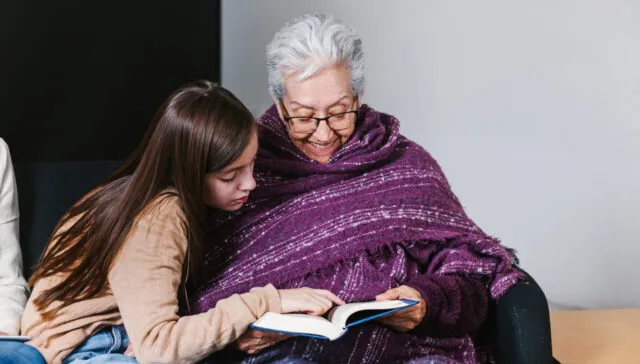Can internet search data be leveraged to make home a safer place for women during a pandemic?

Home is where millions of women worldwide experience violence at the hands of their spouses or extended family members, the phenomenon known as domestic violence. COVID-19 is further challenging the way in which women can report domestic violence with people at home in close quarters. We have identified possible means for collecting better surveillance data through publicly available search data that could identify increases in domestic violence incidents.
The global occurrence of domestic violence
Domestic violence, including physical, sexual, reproductive, emotional, or economic, is a health and human rights violation, leading to mental and physical health consequences, including death. Domestic violence is common worldwide. In the United States, at least one woman in three has experienced beatings, forced sex, or verbal abuse in her lifetime. These statistics are worse for women with intersecting disadvantages including race, poverty, disability, and sexual orientation. Similarly, one in three women around the world experience domestic violence over their lifetimes, 4% to 12% during pregnancy.
Disclosure is a complex behavior, especially when it comes to disclosing experience of domestic violence. Factors specific to women including her perception of how society views domestic violence, abusers, or victims, plays a role in whether women are comfortable disclosing their experiences. Because of this, many women may not call domestic violence hotlines, file a report to the police, disclose intimate partner violence during regular medical checkups, or seek care at the emergency department—even when they sustain an injury.
COVID-19 complicating reporting domestic violence
Research has found not reporting acts of violence is even more common during the COVID-19 pandemic when people are staying home more often. Women experiencing beatings or forced sex are hesitating to call the police or hotlines when their abusers are nearby, fearing repercussions, loss of personal safety, or having to go to a shelter, especially in the era of COVID-19.
For women of color, trust in the police is rather compromised, making disclosure even more complex. Reporting domestic violence incidents through mainstream outlets like domestic violence hotlines or law enforcement agencies may be even less likely because they fear police violence or harsher sentences against their male partners.
The bottom line: domestic violence incidents are happening, and even more so during the COVID-19 pandemic.
The COVID-induced economic recession and loss of work has caused financial stress, resource constraints for life essentials, or even the need for rationing. These conditions can heighten the risk of marital conflicts and result in men perpetrating violence.
Second, women assume more roles when schools, day care centers, restaurants, and dry cleaners are disrupted. This can result in women having an excessive workload, experiencing added stress, anxiety, and maladaptive coping, including substance use. This only increases their vulnerabilities to domestic violence and victimization.
Third, homebound couples may revert increasingly to traditional gender roles, where women are in charge of caregiving and other domestic responsibilities, and in turn become the default target of blame for discomforts, inconveniences, or unmet needs.
Finally, a prolonged, 24/7 stay in close proximity means partners are using their home space for a wide range of needs, increasing the chance of interacting and as a result, more opportunities for conflict.
Using search trends to identify risk
Because of these hindering factors that prevent women from reporting domestic violence, a more proactive surveillance and monitoring system for domestic violence cases is needed. This system must include data that is generated in a more organic and autonomous fashion to create advancements in risk detection and intervention opportunities.
Internet search data is potentially that source. Advances in machine learning present a historic opportunity to harness the potential of the information available on the internet for violence prevention. In 2018, nine in 10 US adults, both men and women, used the internet, with small race differences (White: 92%; Black: 85%; Hispanic: 86%). Most in the US uses Google for online searches. Understanding when someone is searching for information related to domestic violence could indicate an increase of occurrence.
Google Trends is a public online platform allowing for measurement of search term popularity on Google. It collects data across locations, like states and metro areas, and over time (data is available starting from January 2004) by keeping a log of internet search volumes performed on the Google.com search engine. Epidemiologists have previously used Google Trends to identify outbreaks of infectious diseases, such as influenza, chickenpox, and gastroenteritis. Recently, researchers traced global COVID-19 outbreaks back to numerous symptom-related searches.
Google searches capture everything from unfiltered public attitudes and opinions to events; it allows for information-seeking in a private, nonjudgmental way. Fearing or experiencing violence, women may prefer informal and more private ways of preventing domestic violence or mitigating the effects of domestic violence by consulting with online materials or resources. They may consult internet resources for remedial measures or learning about their help seeking options.
Research could reveal strategies for intervention
One potential line of research is to inform the extent to which internet search data from platforms, such as Google, can be used to diversify strategies for domestic violence incident identification, and how to provide and coordinate services during an emergency, including the COVID-19 pandemic. Conducting the three activities below may provide some valuable insights:
(1) assess whether there has been a statistically significant increase in searches for domestic violence since March 2020 for each state and metro in the US;
(2) compare the trends in searches for domestic violence on Google to Domestic Violence Hotline calls and police call volumes for all US states and metros for the months before and during COVID-19 sheltering-in-place; and,
(3) assess the extent to which the states and metro areas with high vs. low hotline-call volumes are different with respect to Google searches for: the type of domestic violence; “liquor stores near me”; “food banks near me”; “unemployment claims”; “eviction during COVID”.
COVID-19 pandemic has reinforced the urgency of diversifying strategies for identification of domestic violence incidents. Our findings will inform ways to diversify the process of incident identifications for domestic violence to make the process more culturally sensitive.
For more information on how your organization can support this research, contact idea hub at ideahub@bu.edu.
Nafisa Halim, MA, PhD Nafisa Halim is a Research Assistant Professor of Global Health at Boston University School of Public Health. She is an applied sociologist with research interests in developing and testing maternal and child health interventions in HIV affected and/or resource-poor settings. Halim’s most current work focuses on intimate partner violence during pregnancy and risk of adverse pregnancy and childbirth outcomes.
Dr. Elaine Nsoesie is an Assistant Professor at the Boston University School of Public Health Department of Global Health. She applies data science methods to global health problems using digital data and technology to improve health, particularly in the realm of surveillance of chronic and infectious diseases.




